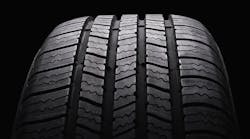The latest projections from the U.S. Tire Manufacturers Association indicated that OE truck tire shipments were up 15.8% and replacement shipments were increasing 7.8%, so the commercial tire and wheel industry finished strong in 2018.
Carriers looking for good news can take solace in the fact that the latest short-term outlook from the U.S. Energy Information Administration projects a slight increase in diesel prices for 2019 when compared to 2018. Most people would agree that it’s not a bad time to be in the trucking business.
Of course, things can change in an instant, and all it takes is a major geopolitical conflict, natural disaster, or economic shift to start a downward trend in trucking. The old saying “make hay when the sun shines” comes to mind as fleets that are still trending upward need to focus even harder on tire and wheel costs. It’s easy to lose sight of how much money is being lost in maintenance when business is good and all of the focus is on moving more freight.
In order to help fleets avoid the trap of worrying about tires later, I’ve come up with a few New Year’s resolutions for controlling tire costs. They’re even ranked by level of importance, so keeping the first resolution alone will have an impact on the bottom line. A fleet that is fortunate enough to hit on all of them should have another banner year in tires and wheels.
- Inflation pressure rules. Every effort must be made to maintain the proper air pressure at all times. All it takes is one day where a tire loses enough air overnight to “sound” inflated the next morning. If it’s underinflated enough under full load, separation can happen before the end of the day. The industry threshold for underinflation is 20%, and I’ve done enough trucking show demonstrations to know that drivers cannot use a hammer to check if a tire is 20% under-inflated. It takes a gauge. Make sure every driver in your fleet has one and uses it.
- Torque matters. For years, the industry has continued using impact wrenches to over-torque wheels under the theory that more is better. More isn’t better, and it shortens the life and performance of wheels and fasteners. By itself, proper torque will actually lead to more loose wheels if the proper installation procedures are not followed. If technicians are going to use a torque wrench, then they have to clean the mating surfaces and inspect the components. If they are not cleaning wheels or inspecting anything, put away the torque wrenches. Rolling the dice with the impact wrench might be the best option.
- Retread instead. The Rodney Dangerfield of the truck tire industry is still fighting for respect. Thousands of fleets save millions of dollars in tire costs through retread programs. The level of technology used in the retread process has never been higher, and the performance has never been better. From the environmental impact to the cost savings, it’s a win-win for all parties. When casing assets are properly managed and retreaders are held accountable, it’s almost fool-proof if the tires are properly inflated.
- Find the perfect match. Dual matching is an area that is easy to overlook as long as the tread depth is enough to pass inspection. The rule is ¼-in. difference in diameter, which translates to 4/32-in. difference in tread depth for the same size and tread design. The 4/32-in. guideline is not perfect, but in most cases, it will identify tires that can be paired in a dual application. Fleets need to remember that improperly matched duals cause irregular wear in both tires and in extreme circumstances overloading of the larger tire.
- Rinse and repeat. Corrosion issues are impossible to avoid with the combination of salt and ice-melting materials on the road. A vehicle’s wheel finish takes a beating during the winter months, and while it can withstand a lot of exposure, the occasional rinse goes a long way toward preserving the original finish of a steel or aluminum wheel. The same principle applies for reconditioned wheels. Clean wheels will look better for a longer period of time.
None of these are groundbreaking developments. In fact, the number one resolution has been around as long as the pneumatic tire. Inflation pressure to a tire is like oil or coolant to the engine and fluid to the transmission, yet daily checks and regular maintenance continue to elude most fleets. If drivers and maintenance personnel can solve the air pressure problem, then the rest of the resolutions should be easy to keep.
* * *
This article originally appeared in the January 2019 edition of Fleet Owner magazine. You can view the digital edition here.



